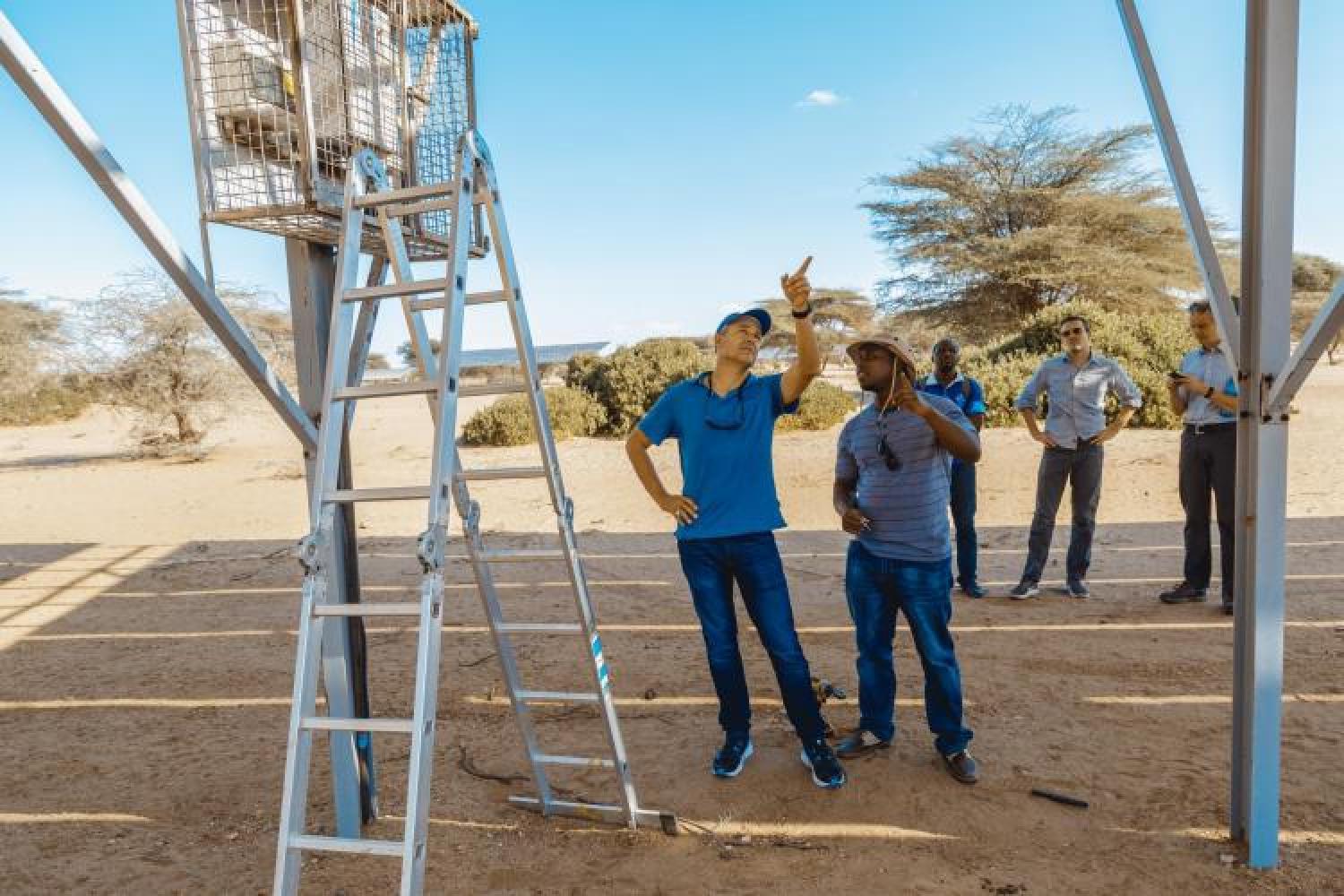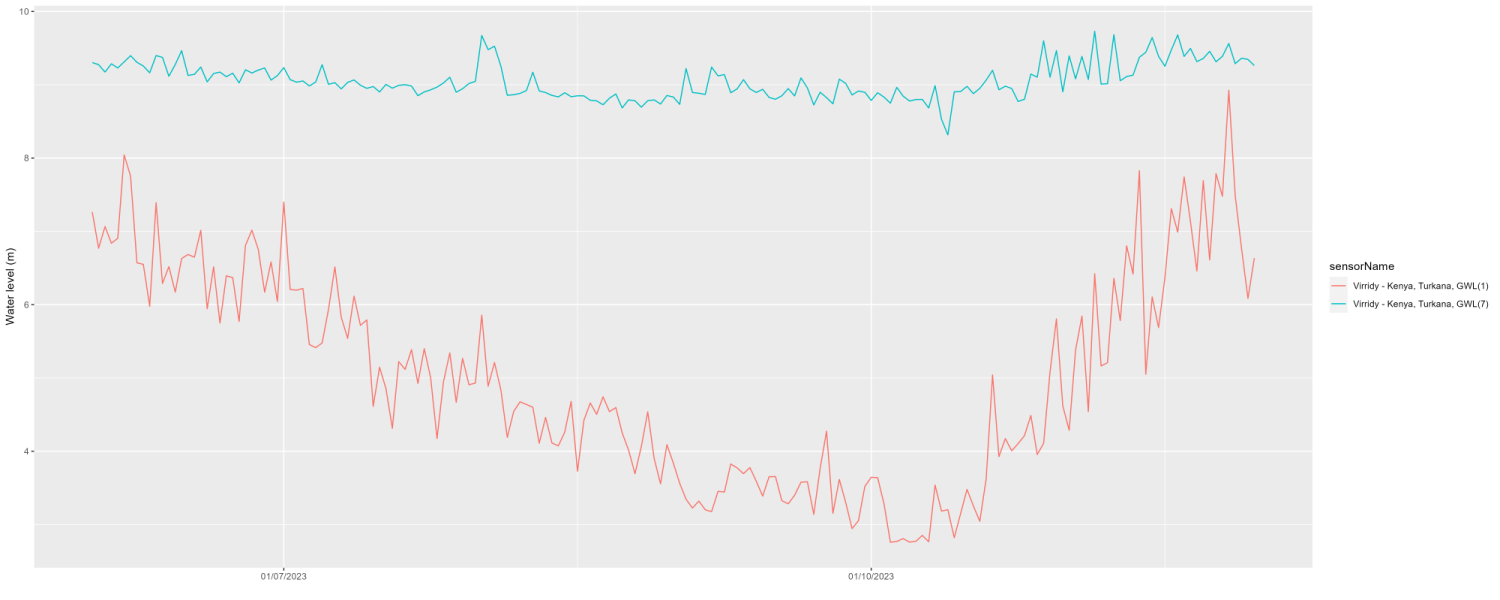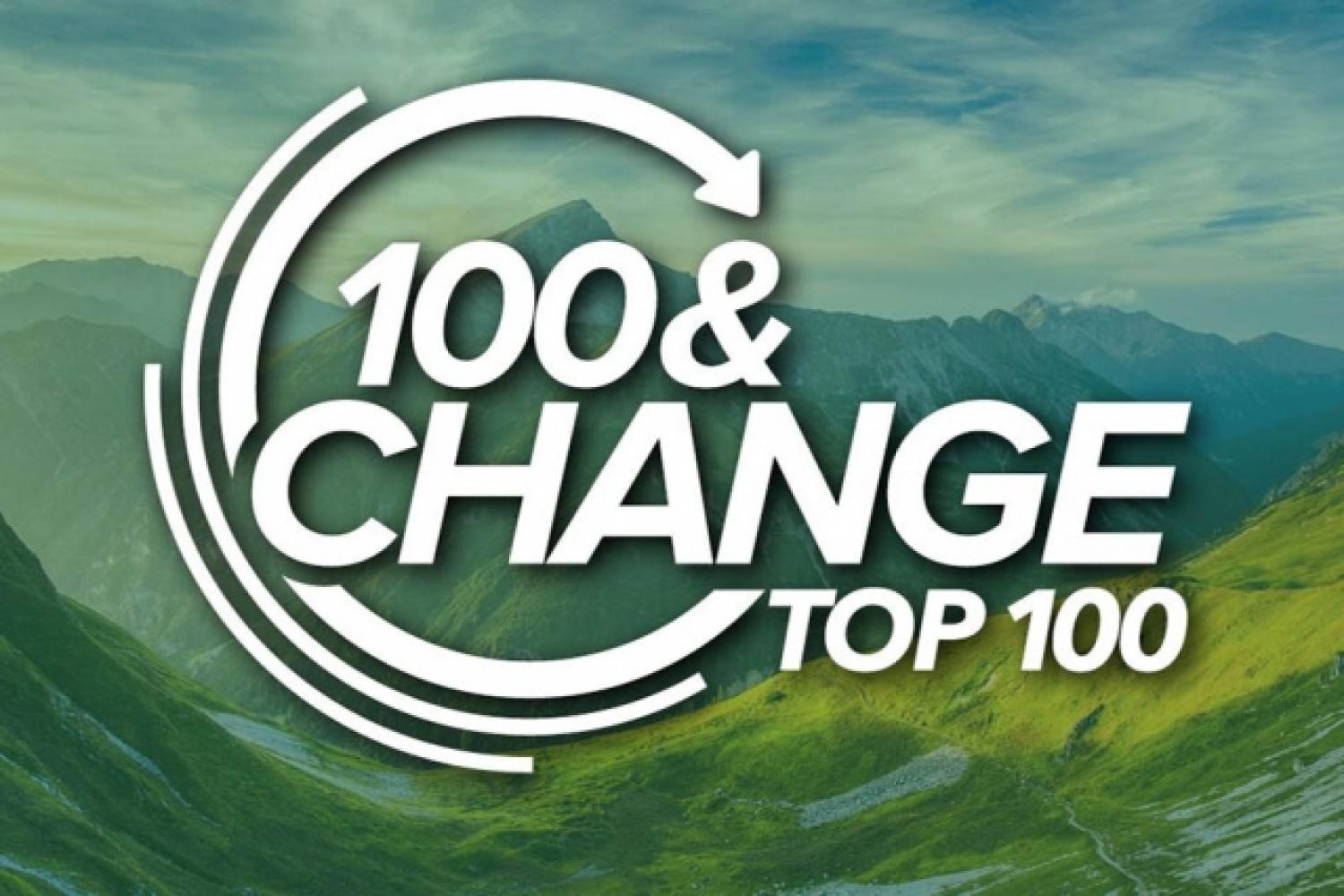Ending Drought Emergencies
The Drought Resilience Impact Platform
The Problem
Millions of people living in the drought prone Horn of Africa face persistent threat from a lack of safe, reliable and affordable water year-round. The arid regions of Somalia, Kenya and Ethiopia are experiencing increasing frequency and severity of drought conditions. Drought emergencies occur when reduced rainfall, exacerbated in recent years by climate change, combined with limited community capacity and institutional failures to cause dramatic reductions in access to water for people, livestock and agriculture. These are among the most marginalized communities in East Africa. This crisis results in:
- Catastrophic crop failures
- Public health stress
- Economic shocks
- Displacement of people.
Historically, responses to drought have been reactive, involving international emergency assistance to save lives and livelihoods, that then disappears when the immediate crisis dissipates. The destabilizing impact of drought emergencies increases with each successive event, leading to vulnerability and insecurity in this complex region of Africa.
The Solution
We can end the cycle of drought emergencies in the arid regions of Kenya, Ethiopia and Somalia. Drought-driven humanitarian emergencies can be prevented if groundwater is reliably made available at strategic locations during cycles of water stress.
DRIP - The Drought Resilience Impact Platform’s comprehensive systems design integrates early detection and planning with proactive groundwater management to ensure water availability, thus enabling drought-prone communities to become effective managers in the prevention of these humanitarian crises. It replaces reactive and expensive short-term assistance measures like water trucking, with a framework for drought resilience. Enacted within a local institutional and governance framework, DRIP can direct adaptation responses, secure ongoing delivery of key services, and deliver assistance specifically when and where it is needed.
The DRIP Theory of Change follows: Water and food security monitoring, plus drought and groundwater forecasting, plus pay-for performance contracting, plus safe water supply operation and maintence together equals water security during drought ends emergencies.
Demonstrated Impact
With data utilized by over a dozen local and international partners including county, regional and national government entities, aid organizations and international donors, the DRIP Consortium has taken the lead in:
- Monitoring the water supplies of 3 million people in arid Kenya and Ethiopia using satellite connected sensors
- Improving water services and drought resilience by linking this data to regional water service provides and national policy makers
- Evaluating impact in Kenya and Ethiopia focused on improving water access during extreme drought.
DRIP Operationalized

- Systems analysis to understand the actors and factors that support increased water and food security
- Groundwater quality, sustainability and asset monitoring
- Online integration of in-situ and remote sensing data with localized drought forecasts decision-response tools to identify water service gaps and forecast drought
- Translation of service gaps and resource shortages into performance based water security actions, led by local organizations.
A Resilient Horn of Africa
Groundwater represents an opportunity to increase reliable water supplies in Africa and provide a buffer against drought. The DRIP Groundwater Use web-based application (screenshot below) creates high spatial and temporal resolution maps of groundwater use and demand in Kenya. The maps are created using estimates of groundwater use from in-situ remote mechanical borehole sensors, satellite data, and hydrological land surface models. The data represents the first operational spatially-explicit sub-seasonal to seasonal (S2S) estimates of groundwater use and demand in the literature. The forecast maps allow users to access historical and projected groundwater use estimates to improve resource allocation, monitor water demand, and develop early warning and early action systems to combat water insecurity in arid and semi-arid lands in Kenya.
Groundwater Sustainability
The region where our team works in East Africa is endowed with groundwater resources. However, the sustainability of this resource is under risk due to increasing abstraction and the impacts of severe and prolonged droughts. This raises concerns for future water security for the vulnerable populations who largely depend on groundwater to meet domestic, and livestock needs. Our team is collaborating with the USGS Earth Resources Observation and Science (EROS) Center to improve drought forecasts by integrating new data services into the DRIP model. Groundwater level sensors have been installed on selected borehole systems in Turkana County in Kenya to monitor aquifer level fluctuations as an indicator of groundwater availability. This new data service is then integrated into the DRIP model to improve drought forecasts and feed into the FEWSNET’s food insecurity analysis. The new data service further enables the team to unravel new insights about aquifer health through groundwater recharge and stability research in the arid regions in Kenya.

Beyond Monitoring and Forecasting
The goal of the DRIP service is to ensure improved water security outcomes for people and their livelihoods. DRIP forecasts and monitoring data provide value to stakeholders working in the region to develop drought anticipatory action (AA) frameworks. The DRIP team is expanding the current service to provide technical assistance to a network of partners developing drought AA protocols for the Horn of Africa. This partnership called “Strengthening Patoralist livelihoods in the African Greater horn through Effective anticipatory action (PASSAGE)” is jointly implemented by the IGAD Centre for Pastoral Areas and Livestock Development (ICPALD), the University of Sussex (UoS), the International Federation of Red Cross and Red Crescent (IFRC), the World Food Program (WFP), the Regional Centre for Mapping of Resources for Development (RCMRD), Virridy, among others.
Our Team
CU Boulder and our partners are already scaling existing efforts within water-stressed areas in the region, and will leverage this experience to accelerate our impact.
The Mortenson Center in Global Engineering & Resilience at CU Boulder combines education, research, and partnerships to positively impact vulnerable people and their environment by improving development tools and practice. The Center has successfully designed and deployed sensors that monitor and enable maintenance of water systems for over 3 million people yearly in the Horn of Africa. The team has designed and managed a $25 million water and energy intervention in Rwanda.
Within the Mortenson Center, our USAID Sustainable Wash Systems Learning Partnership leads a $15.3 million, four-country, multi-partner study to identify the institutional and governance conditions that result in effective improvements of complex water and sanitation systems in this region.
The Millennium Water Alliance (MWA) will leverage expertise at convening partnerships between government actors, NGOs and private sector partners to coordinate our work on the ground in the three countries. MWA currently leads a $35 million program with over 20 private, NGO, and government partners in five arid counties of northern Kenya. MWA is also convening a five-year program in Ethiopia focused on the use of systems strengthening and facilitation approaches to strengthen water and sanitation systems district-wide for improved service delivery. MWA members, including CARE, IRC WASH, World Vision, Food for the Hungry and Catholic Relief Services, have long-term relationships with community, government, other local stakeholders, and extensive expertise working on water services and land planning and management in Kenya, Ethiopia and Somalia.
DRIP will provide direct support to our local government partners in the arid regions of Kenya, Somaliland and Ethiopia, operating through national level partnerships with the Ethiopian Ministry of Water, Irrigation and Energy, the Somaliland State Ministry of Water Resources Development and the Kenya National Drought Management Authority.
- Thomas, E.; Ntazinda, J.; Kathuni, S. Applying Climate Reparative Finance Toward Water Security. Science of the Total Environment 2023, 875, 162506. https://doi.org/10.1016/j.scitotenv.2023.162506
- Macharia, D.; Frankhauser, K.; Selker, J.; Neff, J.; Thomas, E. Validation and Intercomparison of Satellite-Based Rainfall Products over Africa with TAHMO In Situ Rainfall Observations. Journal of Hydrometeorology 2022, 23(7): 1131-1154. https://doi.org/10.1175/JHM-D-21-0161.1.
- Fankhauser, K.; Macharia, D.; Coyle, J.; Kathuni, S.; McNally, A.; Slinski, K.; Thomas, E. Estimating Groundwater Use and Demand in Arid Kenya through Assimilation of Satellite Data and In-Situ Sensors with Machine Learning toward Drought Early Action. Science of The Total Environment2022, 831, 154453. https://doi.org/10.1016/j.scitotenv.2022.154453.
- Thomas, E.; Jordan, E.; Linden, K.; Mogesse, B.; Hailu, T.; Jirma, H.; Thomson, P.; Koehler, J.; Collins, G. Reducing Drought Emergencies in the Horn of Africa. Science of The Total Environment2020, 727, 138772. https://doi.org/10.1016/j.scitotenv.2020.138772.
- Thomas, E. A.; Needoba, J.; Kaberia, D.; Butterworth, J.; Adams, E. C.; Oduor, P.; Macharia, D.; Mitheu, F.; Mugo, R.; Nagel, C. Quantifying Increased Groundwater Demand from Prolonged Drought in the East African Rift Valley. Science of The Total Environment2019, 666, 1265–1272. https://doi.org/10.1016/j.scitotenv.2019.02.206.
- Turman-Bryant, N.; Nagel, C.; Stover, L.; Muragijimana, C.; Thomas, E. Improved Drought Resilience Through Continuous Water Service Monitoring and Specialized Institutions—A Longitudinal Analysis of Water Service Delivery Across Motorized Boreholes in Northern Kenya. Sustainability 2019, 11 (11), 3046. https://doi.org/10.3390/su11113046.
- Thomas, E., (Editor), Innovations in WASH Impact Measures - Water and Sanitation Measurement Technologies and Practices to Inform the Sustainable Development Goals, The World Bank, 2018.
- Thomas, E., (Editor), Broken Pumps and Promises: Incentivizing Impact in Environmental Health Springer, 2016.
- Leveraging Satellites and the Internet of Things, SweetSense Facilitates Water Service Access in Kenya and Water Resource Management in California, USAID AgriLinks, May, 2019
- Pioneering a Systematic Approach to Better Operate and Maintain Rural Water Schemes in Ethiopia’s Remote Afar Region - Lowland Water, Sanitation and Hygiene WASH Activity BRIEFING NOTE, JANUARY 2019
- Real-Time Monitoring for Improved Water Services in the Ethiopian Lowlands - USAID Lowland WASH Activity and USAID Sustainable WASH Systems Learning Partnership Briefing Note, September, 2018
- Mobile Communities in Ethiopia Seek Fixed Solutions To Their Water & Sanitation Challenges - USAID Global Waters partners with SweetSense, Inc. - USAID Water Team, Medium/USAID Global Waters - Jul. 24, 2018
- Satellite Monitoring: An Innovative Solution for Water Management - Catholic Relief Services, Lodwar Water & Sanitation Company, SweetSense, and the local county government have partnered to create prevention technology in response to the borehole breakdowns and water scarcity crisis in Turkana County, and throughout Kenya. - M. Lawson, Medium - Sept. 12, 2017
Million Lives Collective
The Drought Resilience Impact Platform was recently recognized as an inaugural member of the Million Lives Collective, Vanguard, recognizing our positive impact on at least a million people living on less than $5 per day. The Million Lives Club selection committee includes USAID, UNICEF, Canada Grand Challenges, GIZ, UK AID, and UNDP.
Mortenson Center in Global Engineering & Resilience
Millennium Water Alliance
The Millennium Water Alliance leverages expertise at convening partnerships between government actors, NGOs and private sector partners to coordinate our work on the ground. MWA currently leads a $35 million program with over 20 private, NGO, and government partners in five arid counties of northern Kenya.


